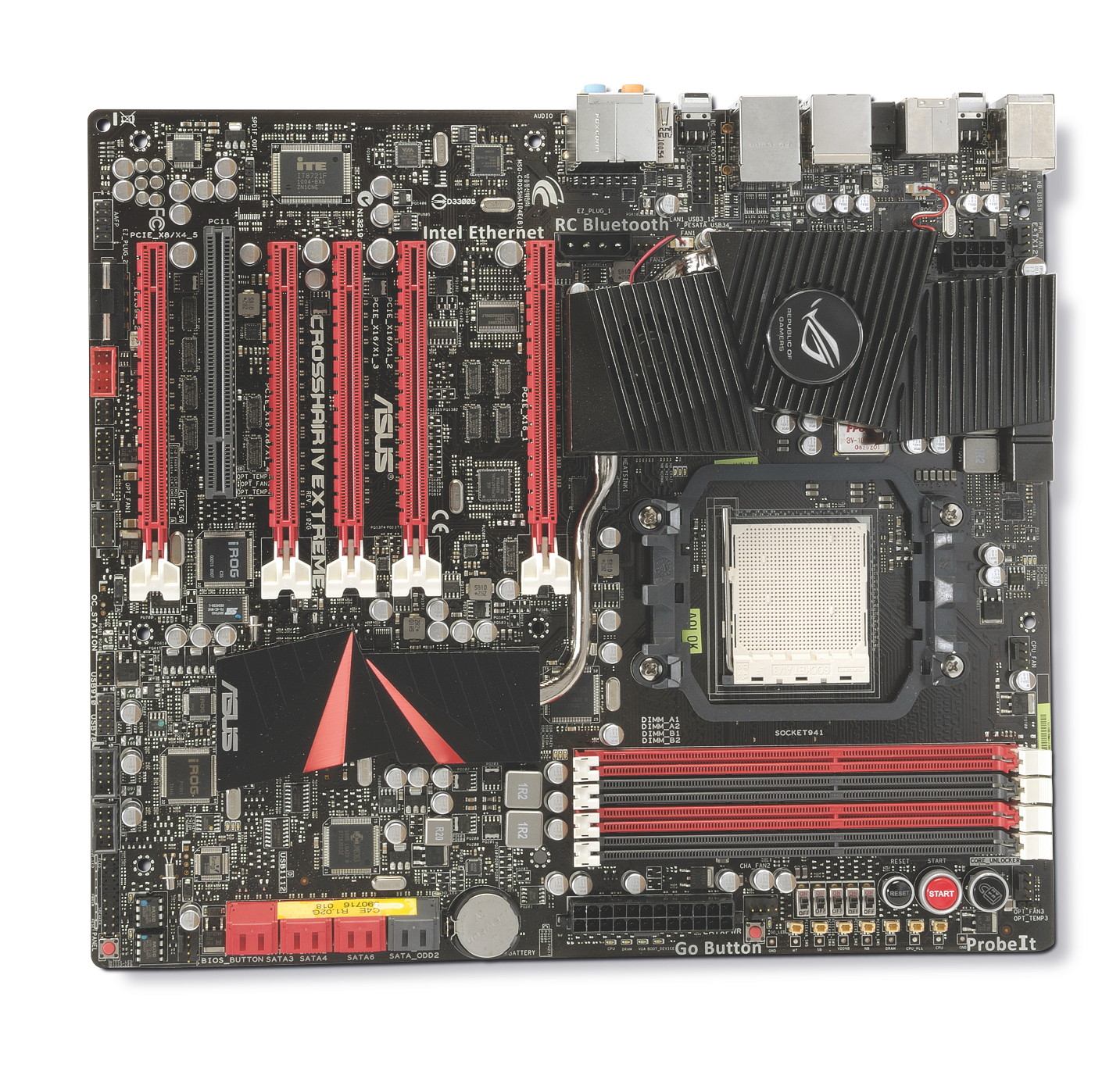Why you can trust TechRadar
Unlike MSI's AMD AM3-based board offering HydraLogix support, the 890A Fuzion, Asus's Crosshair IV Extreme uses the full-fat version of AMD's 890 chipset: the 890FX. So even without Lucid's chip, you get full x16 dual and triple CrossfireX support, while the SB850 Southbridge provides native SATA6 and USB 3.0 support.
The 890FX Northbridge, Lucid chip and the voltage regulators all sit under what at first glance looks like a large passive heatsink, but which actually has small cooling fans underneath. The Southbridge sits under a heatsink too, with a hefty heatpipe connecting both cooling plates.
There are five x16 PCIe slots. Take care to use the ones that suit whatever graphics setup you're running. Slots one and three are the ones for straightforward dual-card Crossfire use – these are taken care of by the 890FX, which eliminates the latency within the HydraLogix controller.
The 890FX will also support four cards in a Quad CrossfireX setup, but not at full x16 speed. The HydraLogix chip takes care of slots two, four and five, and can be used in only in dual- or triple-card setups presently, although Quad GPU Hydra support will follow later in Q4 2010.
Nine SATA ports are provided; six SATA 6GB/s ports (coloured red) and two SATA 3GB/s (black) ports are edge mounted at 90 degrees, while the third SATA 3GB/s port is vertically mounted next to them. The SB850 provides RAID 0, 1, 5 and 10 support for the SATA6 ports. There's also integrated Gigabit Ethernet and eight-channel audio.
Since it's a RoG board, Crosshair IV Extreme comes with a RoG Connect module, which enables you to tweak and overclock the board either from another PC (via the supplied cable) or from the comfort of your armchair via Bluetooth using a laptop.
Current page: Asus Crosshair IV Extreme review: Architecture
Prev Page Asus Crosshair IV Extreme review: Overview Next Page Asus Crosshair IV Extreme review: Benchmarks